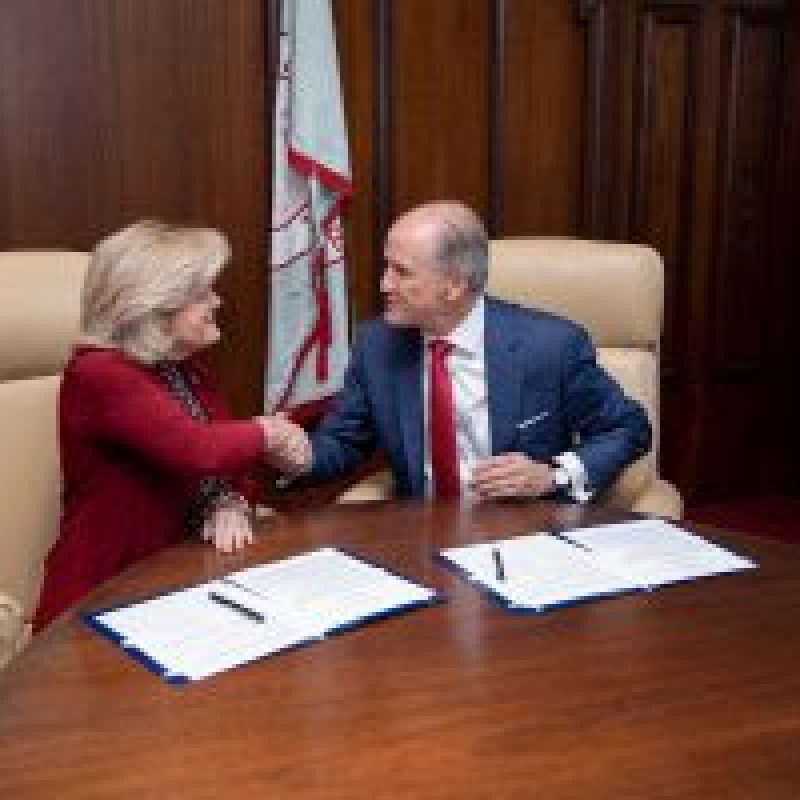TUSCALOOSA, Ala. — An agreement between The University of Alabama and NASA will enhance inventive research assisting space exploration and strengthening education of tomorrow’s aerospace workforce.
UA President Stuart R. Bell and Jody Singer, director of NASA’s Marshall Space Flight Center, signed a memorandum of understanding Nov. 6 that builds on significant and ongoing collaborative projects in the broad area of additive manufacturing and its potential application with in-space manufacturing.
“Our partnership with NASA is an important priority in our efforts to provide opportunities for our students and researchers to offer solutions to leading-edge challenges,” Bell said. “Working to further in-space manufacturing will establish the University’s expertise in the area while training a skilled workforce our state can rely on to remain competitive in the global economy.”
In-space manufacturing includes making the materials needed for the mission using components brought from Earth or gathered from the moon or Mars. It could include additive manufacturing processes like 3-D printing with plastics, electronics or metals along with the capabilities to design and characterize the materials.
“Additive manufacturing is a rapidly evolving, disruptive technology,” Singer said. “As NASA continues to invest in in-space additive technology innovations, we welcome collaborations with industry and academia to develop these technologies. I applaud The University of Alabama for pursuing the development of advanced technologies that will help NASA achieve our mission.”
The Office for Research and Economic Development leads the UA partnership that initially involves the colleges of Engineering and Arts and Sciences, as well as the Culverhouse College of Business.
“This innovative agreement positions the University to be a national leader for in-space manufacturing, and allows our faculty and students to be part of leading-edge technology needed for NASA to advance its mission,” said Dr. Russell J. Mumper, UA vice president for research and economic development.
The University will enhance its core curriculum in areas of advanced and in-space manufacturing and foster new collaborations to further this emerging technology. Areas of emphasis include value proposition, modeling, analysis and simulation, data analytics, robotics, rendezvous and capture, navigation, advanced materials, on-site resource utilization, additive manufacturing, advanced manufacturing processes, digital design, and manufacturing and construction.
Both UA and NASA share an intent to expand commercialization of technology and bolster workforce development with the agreement.
Marshall Space Flight Center has worked with the University through multiple Space Act agreements since 2015. Through these agreements and other partnership mechanisms, NASA shares resources, personnel and expertise, facilities and equipment, and technology with UA to advance aerospace research or achieve mission goals.

